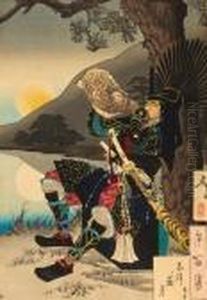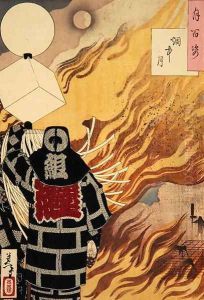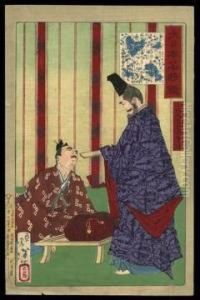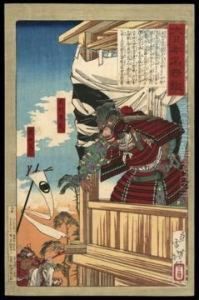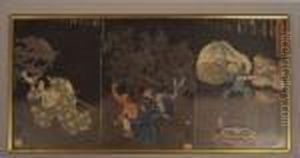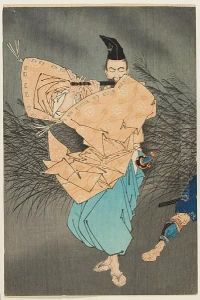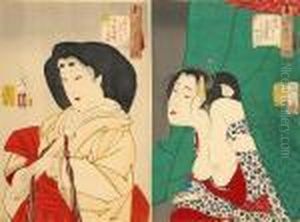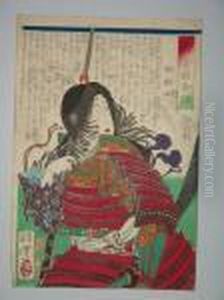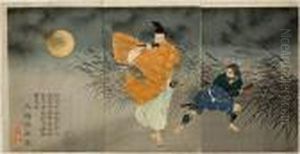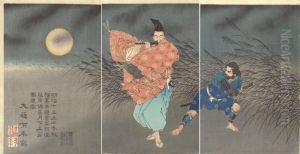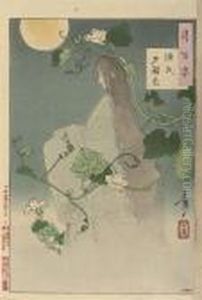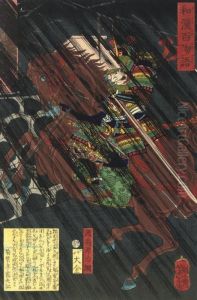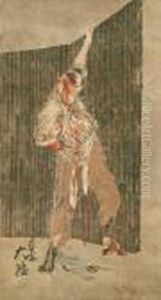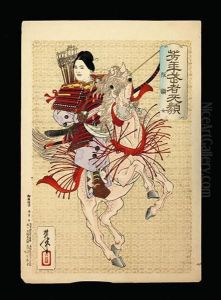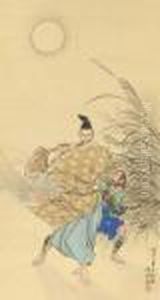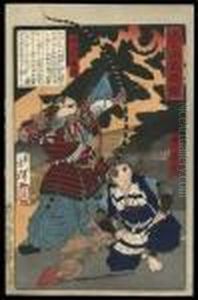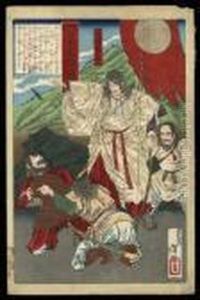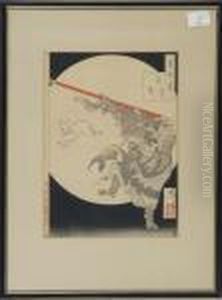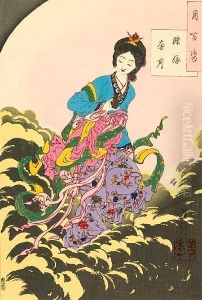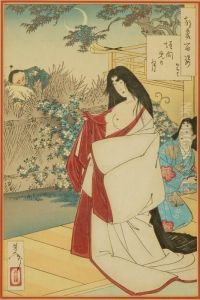Tsukioka Yoshitoshi Paintings
Tsukioka Yoshitoshi, also known as Taiso Yoshitoshi, was a Japanese artist who is widely regarded as the last great master of the ukiyo-e genre of woodblock printing and painting. Born in Edo (now Tokyo) on April 30, 1839, he witnessed the transformation of Japan from its traditional feudal society into a modern state during the Meiji Restoration.
Yoshitoshi began his art career at a young age, studying under Utagawa Kuniyoshi, one of the last great masters of the ukiyo-e school. His talent was evident early on, and he quickly made a name for himself, specializing in beautiful prints of warriors, historical figures, and scenes from folklore. Yoshitoshi's work is known for its intense and often violent imagery, which reflected the turbulent times in which he lived. He witnessed the collapse of the Tokugawa shogunate and the birth of modern Japan, events that had a profound impact on his art.
Despite his success, Yoshitoshi struggled with mental illness and poverty throughout his life. His work fell out of favor for a time as Japan modernized and Western art styles became more popular. However, Yoshitoshi was a prolific artist, and by the 1880s, he had achieved renewed recognition and success with series such as 'One Hundred Aspects of the Moon' and 'New Forms of Thirty-six Ghosts'.
Yoshitoshi's style evolved over time, blending traditional Japanese techniques with Western perspectives and realism, a combination that contributed to his unique and powerful aesthetic. He is known for his masterful use of color and for pushing the boundaries of woodblock printing to achieve remarkable levels of detail and emotional depth.
Tragically, Yoshitoshi's life and career were cut short when he died on June 9, 1892, at the age of 53. Despite his relatively short life, Yoshitoshi's legacy endures, and he is remembered as an artist who bridged the gap between old and new Japan. His works are considered masterpieces of ukiyo-e art and continue to be celebrated for their beauty, expressiveness, and historical significance.
